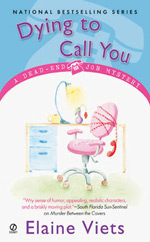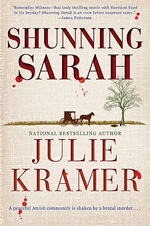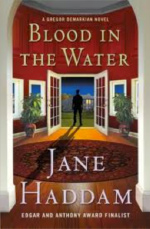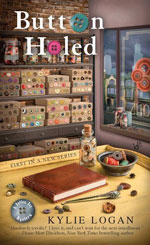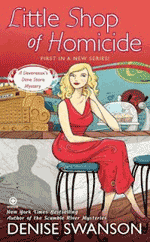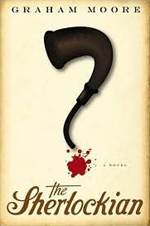Sharon Fiffer: Buried Stuff
Sharon Fiffer’s “stuff” books are dangerous – read one, and you might be eyeing your mother’s or grandmother’s aprons or dishtowels as “vintage”, or remembering those salt and pepper shakers belonging to same that were given away without a second thought. In the opening scene of Buried Stuff, series heroine Jane Wheel is practically having a heart attack because she’s finally agreed to a garage sale to clear out some of her own stuff (which apparently packs her entire house, stem to stern). Jane’s friend, and flashier antiques picker/dealer, Claire Oh has helped to set it up and keep Jane on the straight and narrow – Jane doesn’t want to give up a thing. Almost before the garage sale is over, though, Jane gets a call from her parents back home in Kankakee, Illinois – their old friend Fuzzy has found some bones in his backyard, and could Jane’s husband Charley (a geologist) come have a look at them? Since Jane had neglected to plan a family vacation, Charley and son Nick quickly convince Jane that it would be fun to “camp” out in the cabin behind Fuzzy’s house while they look at the bones. Jane agrees – against her better judgement. When she gets to Fuzzy’s she remembers that she hates camping, the dark, and using an outhouse (I’m in full agreement with her there).
